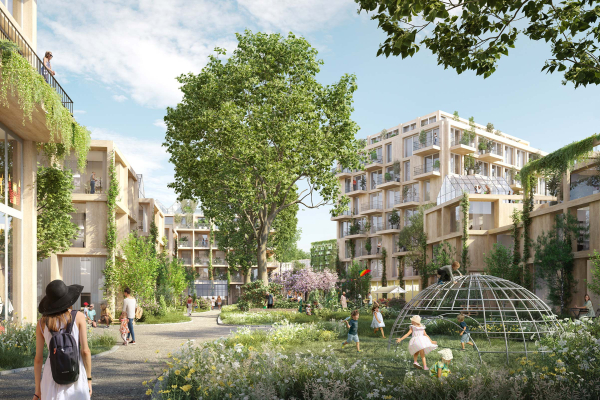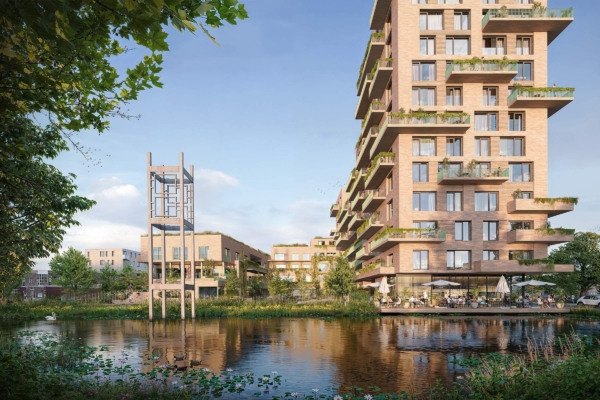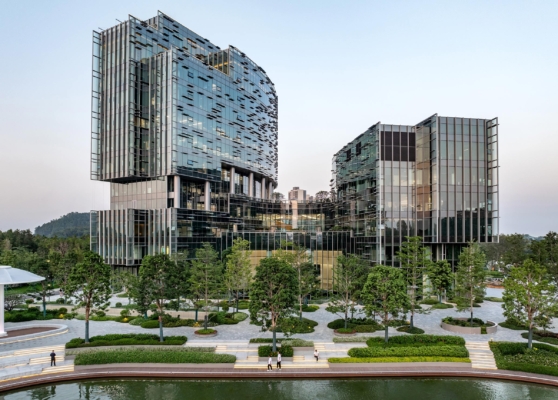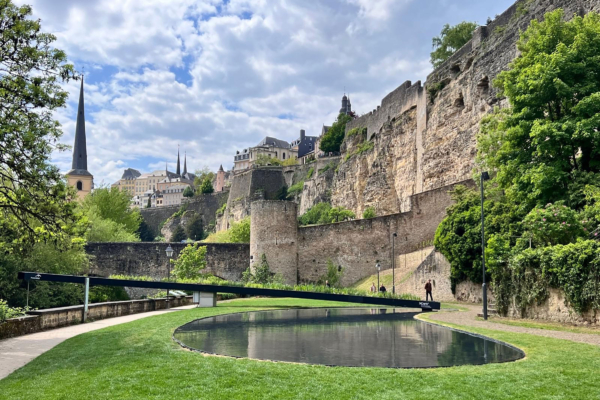Resilience on a regional and national scale
Rather than opting for the usual reactive flood-height-dependent protection, the proposal applies an anticipatory (flood) risk-based approach. Conceived by a cost-benefit analysis and multilayered strategy, the flood risk-based approach looks beyond the embankment itself, to the river basin level. Understanding the river as a system is key to choosing the best intervention that is most true to the river’s natural properties. By fully reconnecting the Vltava River with its floodplain, the project stays as close as possible to the natural morphology of Vltava while addressing the long-term flood protection goals.
Rohan and Libeň Island
Prague, CZ
| Type | Landscape design concept plan |
| Design | 2022-2023 |
| Location | Prague, Czech Republic |
| Size | 19 ha |
| Client | Institut plánování a rozvoje Prahy - IPR, City of Prague |
| I.c.w. | M2AU, de Architekten Cie., Deltares |
| Team | Peter Veenstra, Artur Borejszo, Simon Verbeeck, Nerea Febré Diciena, Sara Ingignoli, Jie Wang, Roberto Coccia |
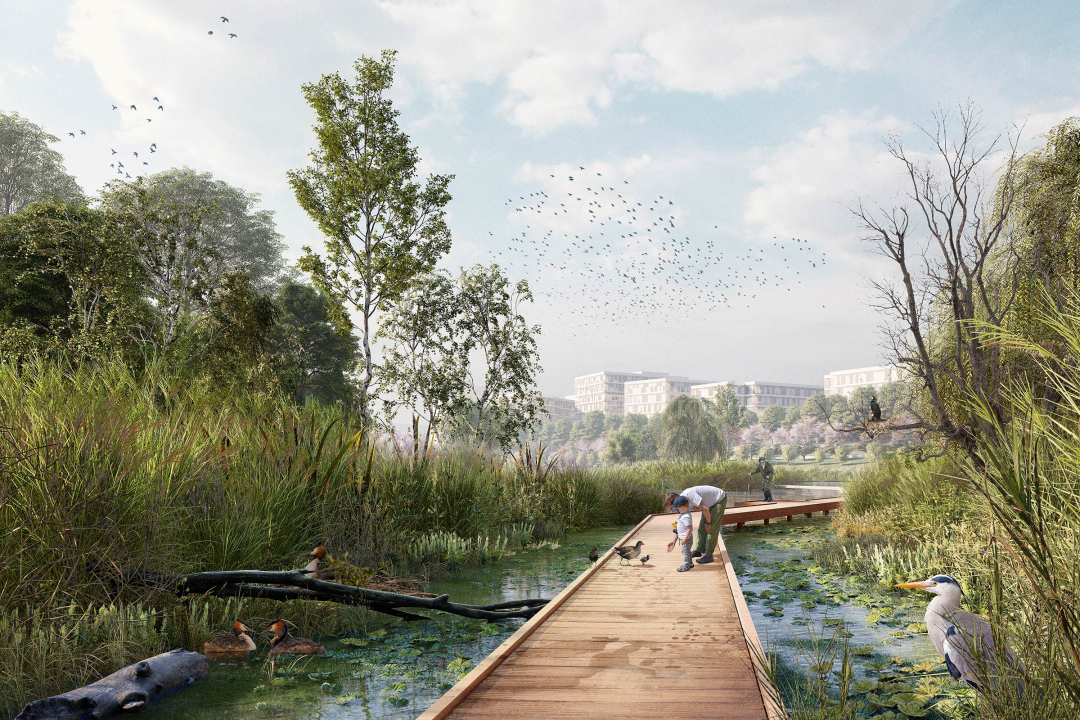
The Rohan and Libeň Island constitute a vital transition zone between the Vltava River’s meandering course and Prague’s bustling city. This territory has undergone successive and profound transformations throughout history, shaping its identity in various ways. Today, it stands at the threshold of a fresh chapter, marked by a response to contemporary climate, ecology, society, and economic challenges during the XXIc era. This new evolutionary phase seeks to navigate the intricate intersection of natural dynamics and urban development as the islands adapt to meet the demands of a rapidly changing world.
Following over a year of the international competitive dialogue initiated by the City of Prague in conjunction with the Institute of Planning and Development (IPR Prague), LOLA Landscape Architects, in partnership with M2AU, de Architekten Cie, and Deltares, secured the second position in the competition. The team received high-scores in the criteria of the quality of the proposal and delivered a top-scoring proposal for the refinement and implementation process for the Rohan and Libeň Islands.
The park’s identity is created based on its topography and natural vegetation. These qualities are timeless and are likely to be appreciated in 50 to 100 years.


Lively terraces as a new waterfront
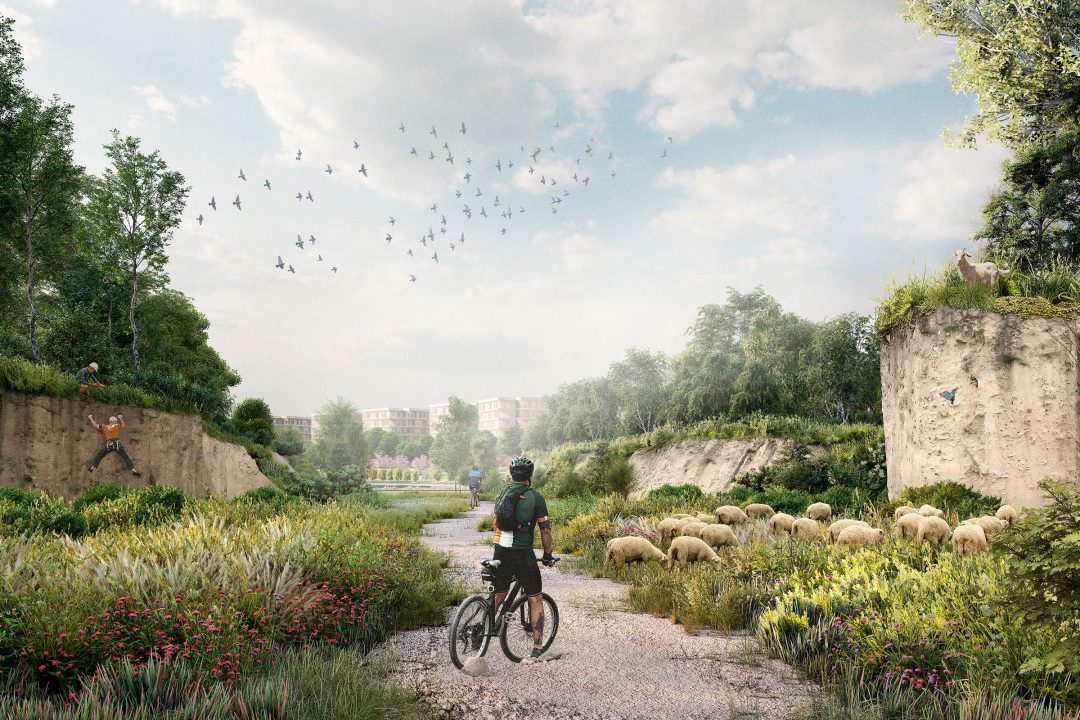
Dense foliage serves as a haven for wildlife, creating a mini-ecosystem within the urban landscape
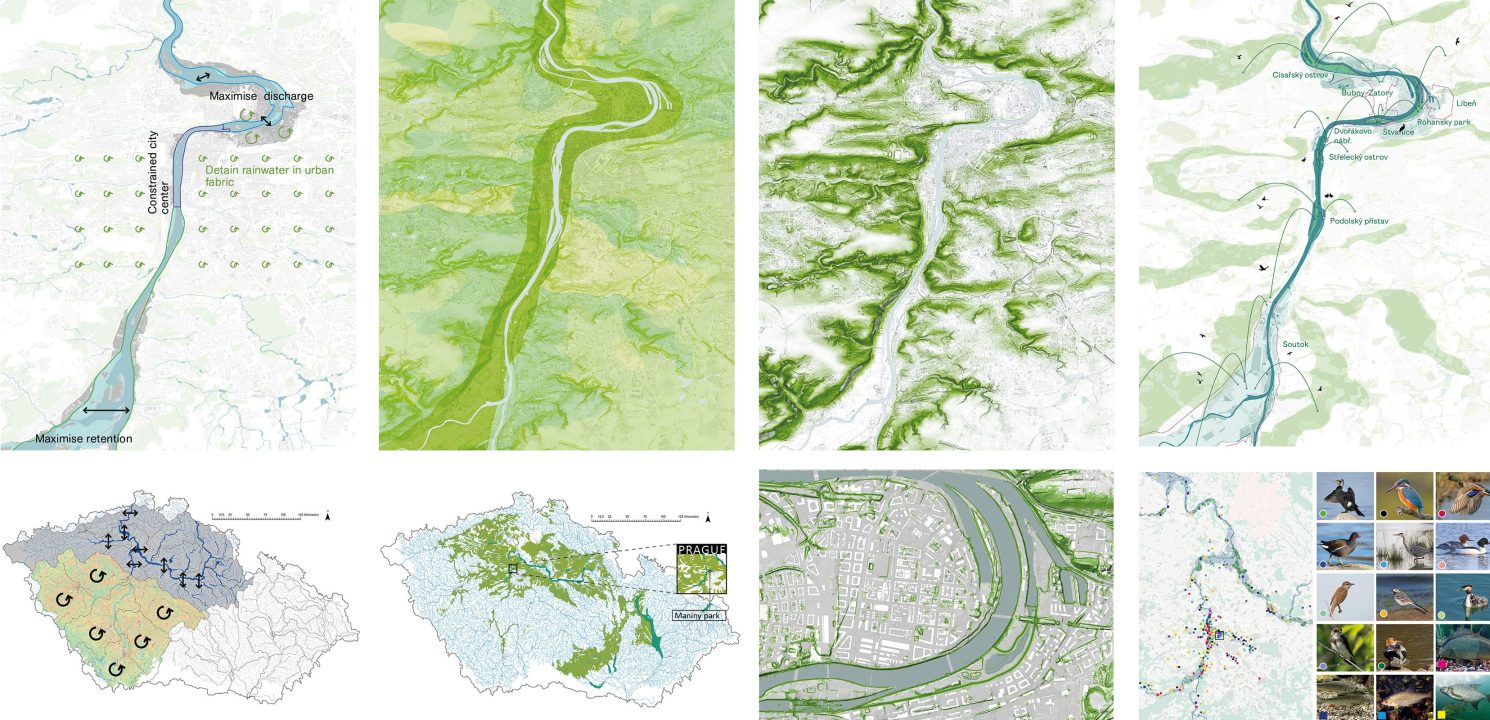
Enhance local biodiversity
Extensive research on the river’s flora and fauna along the entire stretch of the river and within the immediate surroundings, we formulated a strategy deeply ingrained in the rich natural diversity of riparian habitats characteristic of the Vltava meander. Our team’s proposal not only supplements but also enhances the presently fragmented system, establishing a network of wildlife sanctuaries that extend beyond the project area, encompassing the broader context of Rohan and Liben islands.
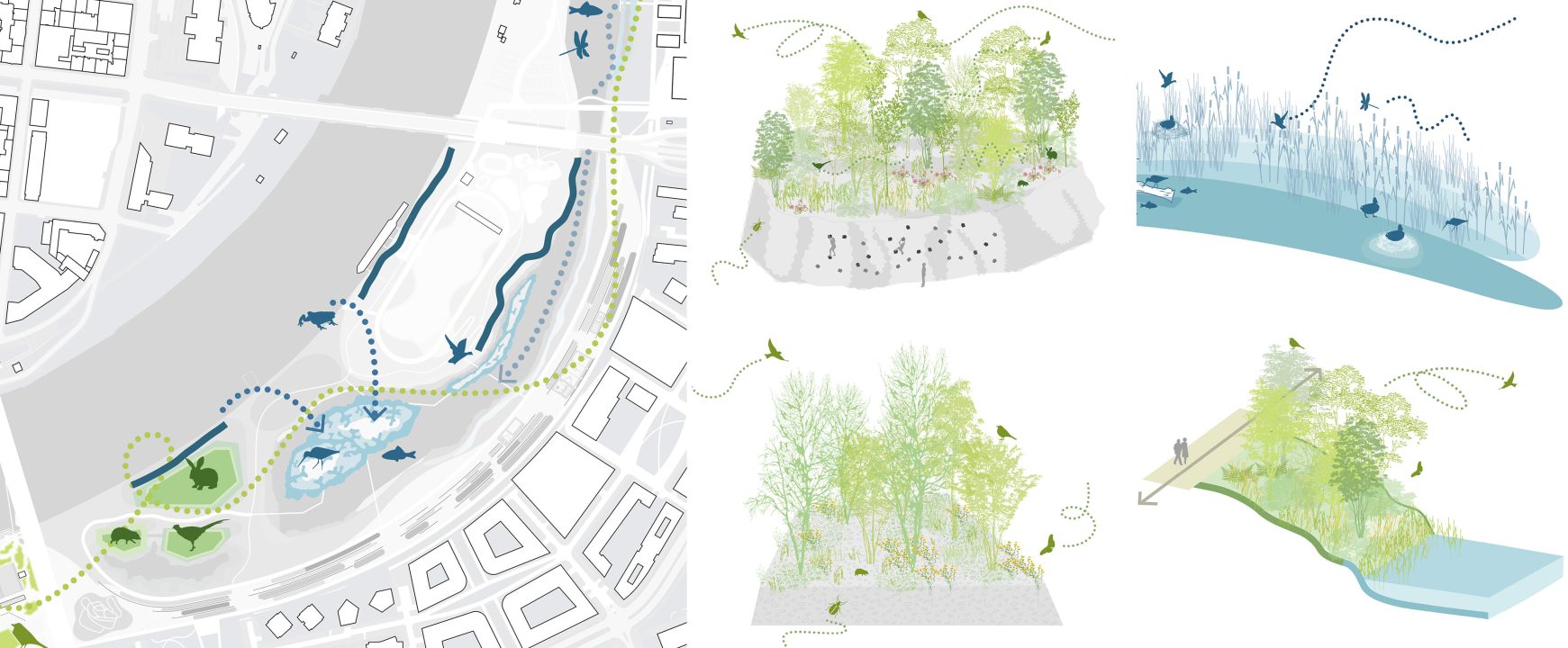

A high standard for landscape and urban design
As the intermediary zone bridging the river and the city, the Rohan and Libeň park design strategically navigates the complex overlap of natural and urban challenges. The park is divided into two distinctive zones: a serene and natural peninsula nestled between the Vltava main channel and a newly created backwater, and a lively community stretch adorned with expansive terraces, positioned in front of the emerging urban silhouette known as ‘Rohan City’. The terraces, rooted in the historic heritage of Prague landscapes, establish a robust spatial and programmatic connection between vibrant communities. This integration reinforces the longstanding tradition of communal ties and land cultivation, fostering a sense of shared identity and purpose.
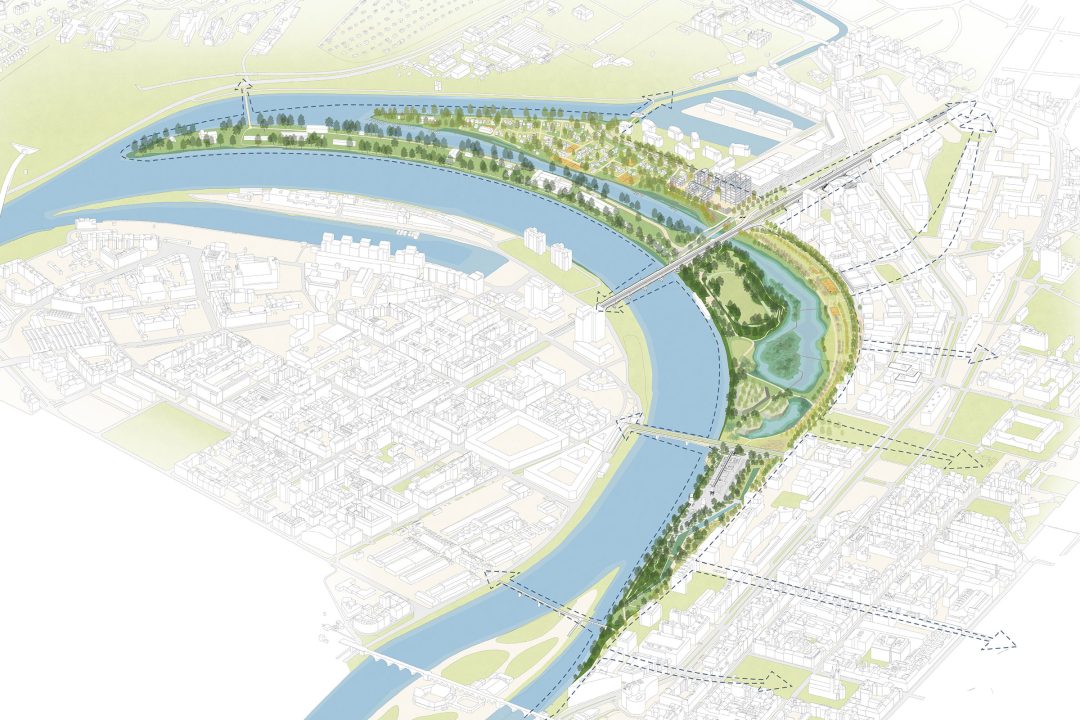
Change stereotypes about functioning and aesthetics
We envision this park as a dynamic space, molded over time by both natural processes and the active involvement of Prague’s residents. The project places a significant emphasis on creating a framework for the future, guided by considerations of natural dynamics, responses to climatic challenges, preservation of cultural heritage, and alignment with contemporary needs for both nature and people. The design is driven solely by subjective aesthetics, while adopting a flexible and evolutionary model that allows for ongoing adaptation and co-creation.
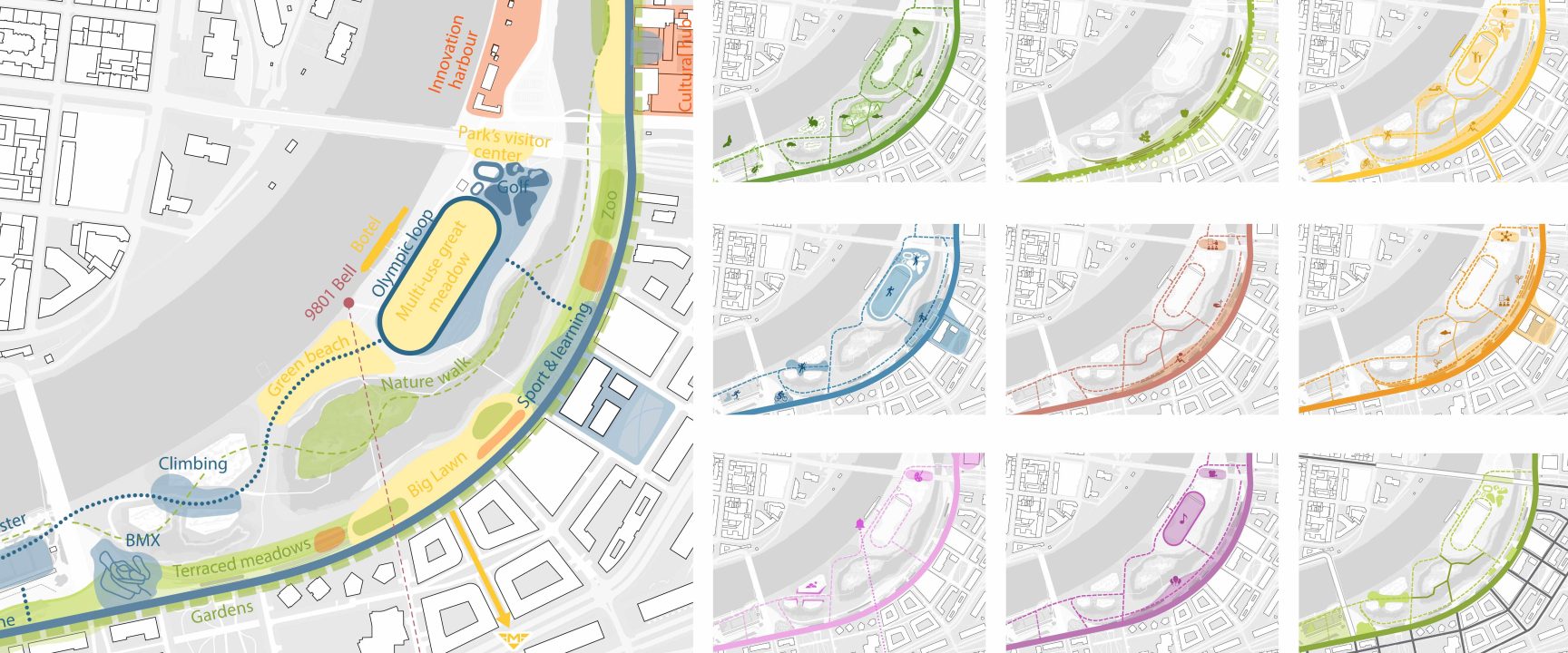

Plot 4003 can further strengthen the integrity of a wider urban ecological zone of Rohan Island
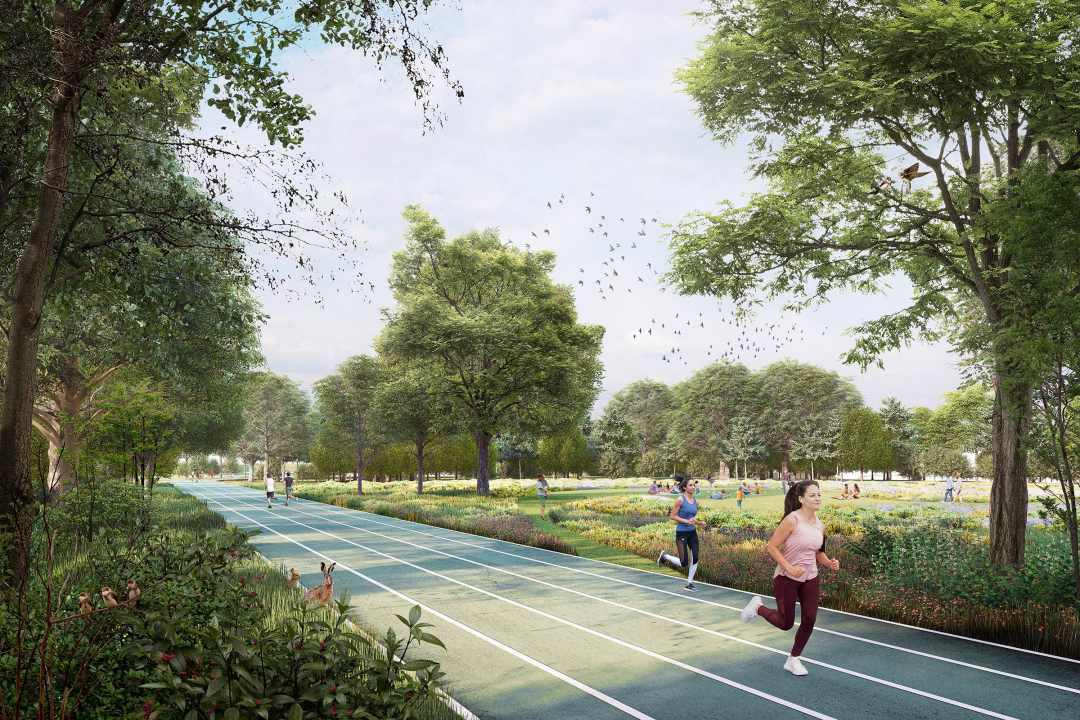
Sport paths offer people a variety of options for exercise in a natural environment

